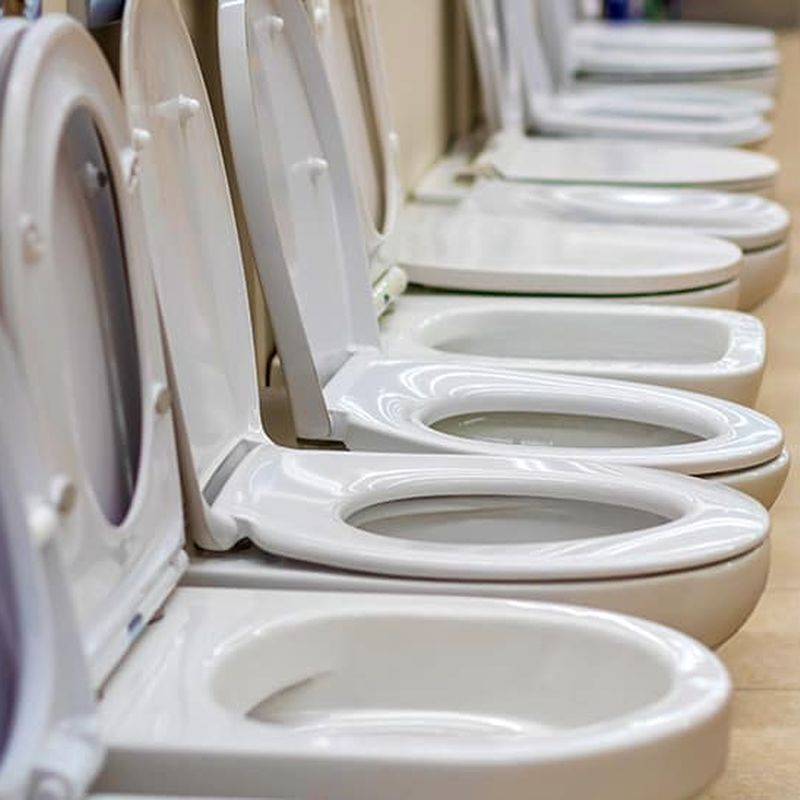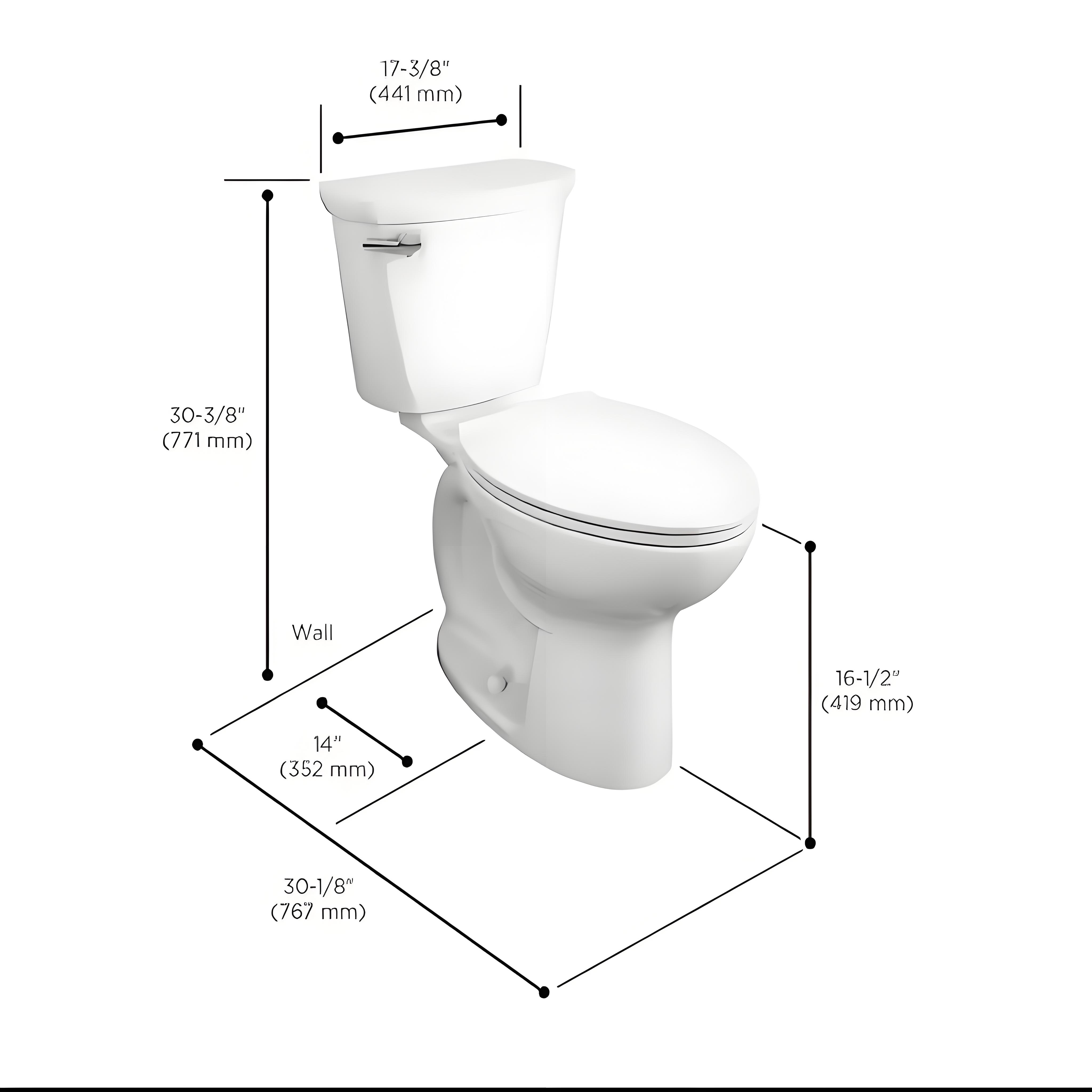 English
English
Jabra Sanitary is a sanitaryware supplier offering toilets, sinks, faucets, bathtubs, etc., at competitive prices. If you're a distributor, wholesaler, or project contractor, get a quote today!
 $23.9 Limited-time Offer
$23.9 Limited-time Offer Consignment Policy
Consignment Policy 20 Years of Experience
20 Years of Experience
Did you know that the average person spends about 60 hours a year washing dishes? That's a lot of time standing at the kitchen sink! We believe that choosing the right kitchen sink can make those hours more efficient, enjoyable, and even a little less stressful.
That's why we're excited to guide you through one of the biggest kitchen debates: double vs single kitchen sinks. By the end, you'll know exactly which sink aligns with your kitchen habits and space.
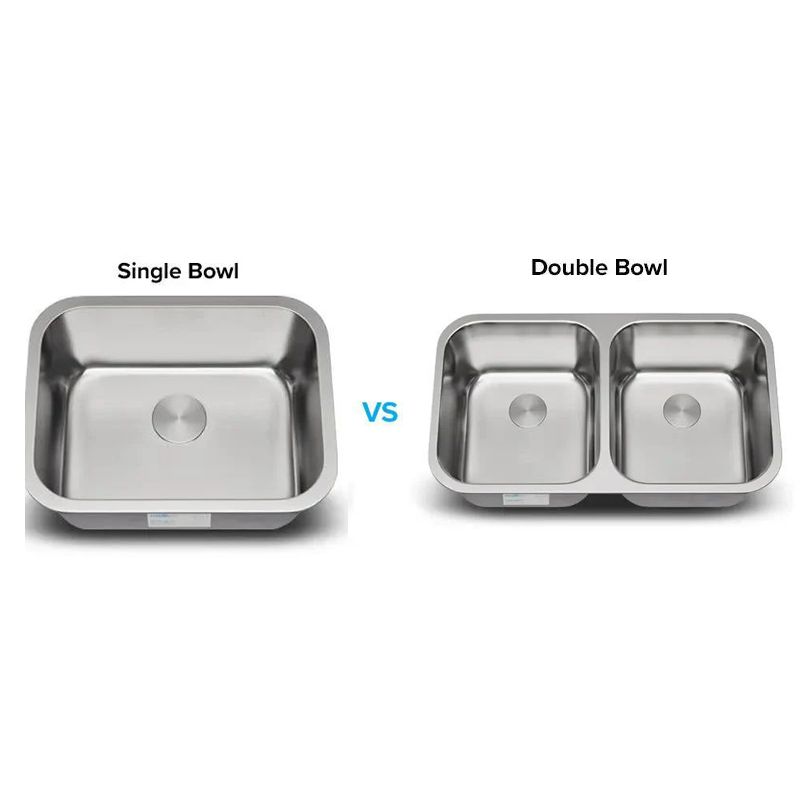
Table of Contents
Double vs Single Kitchen Sink: The Key Differences
The Pros and Cons of a Double-Bowl Kitchen Sink
The Pros and Cons of a Single-Bowl Kitchen Sink
Cost Comparison: Double Sink vs. Single Sink in Kitchen
Space Requirements for Double vs. Single Bowl Kitchen Sinks
Usage Patterns: Double or Single Kitchen Sink, Which is More Practical?
Installation Complexity: Double Sink Versus Single Sink in Kitchen
Maintenance and Longevity: Double Bowl Kitchen Sink vs Single
Resale Value: Does a Double Kitchen Sink or Single Boost Home Value?
Design Trends in 2025: What Are Homeowners Choosing?
FAQs
Conclusion: Single or Double Sink, Which Fits Your Kitchen?
Double vs Single Kitchen Sink: The Key Differences
Choosing a double or single kitchen sink can feel like a big decision. This decision hinges on practical factors below.
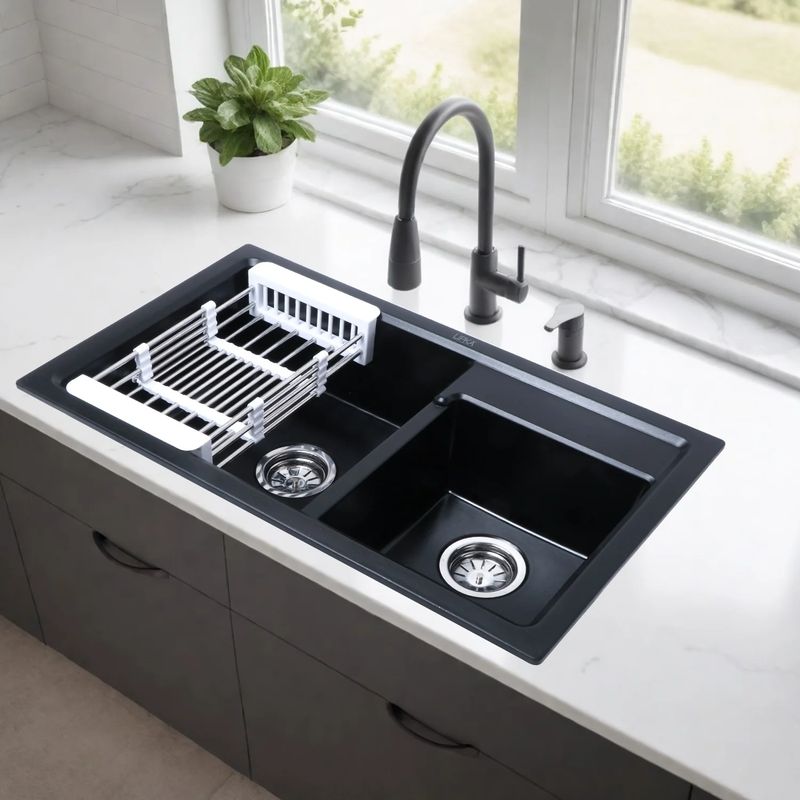
Basin Configuration: It all starts with the basics. A standard single basin measures 30x18 inches, while double basins average 15x18 inches each. A single sink gives you one big basin—great for tackling large cookware or soaking a stack of plates.
Double sinks, though, split the space into two basins. Double sinks allow task separation, such as washing and rinsing simultaneously.
Functionality: If you cook big meals or love oversized pots, a single sink's roomy design is a winner. It offers plenty of space without barriers, making cleanup a breeze. Double sinks, however, are built for multitasking.
Imagine washing dishes in one basin while soaking laundry or rinsing veggies in the other—perfect for busy kitchens or homes without a dishwasher.
Space Considerations: Kitchen size plays a role too. Single sinks are compact, freeing up counter space for prep or appliances, and ideal for smaller setups. Double sinks need more room, so they're better for larger kitchens where you can spread out.
Usage and Maintenance: Single sinks are simpler to clean—no extra corners for grime to hide. Double sinks, with their dividers, might take a little more scrubbing but offer versatility, like a built-in spot for a dish rack.
The Pros and Cons of a Double-Bowl Kitchen Sink
We understand that picking the right sink can feel like a big decision. A double-bowl kitchen sink has some great advantages, but it also comes with a few drawbacks.
Pros of a Double-Bowl Kitchen Sink:
- Multitasking Magic: With two basins, you can wash dishes in one side and rinse in the other—or prep food in one while soaking pots in the other. It's a lifesaver when things get hectic!
- Stay Organized: A double kitchen sink lets you keep clean and dirty items separate. No dishwasher? No problem—this setup keeps everything under control.
- Great for Big Cooks: Ideal for households with multiple users or frequent entertaining, the extra basin offers flexibility. Think soaking laundry on one side while rinsing veggies in the other.
Cons of a Double-Bowl Kitchen Sink
- Space Hog: These sinks take up more counter space, which can feel cramped in smaller kitchens. You might miss that extra room for chopping or appliances.
- Cleaning Challenge: The divider between basins can trap grime, requiring a little more elbow grease to keep it spotless.
- Smaller Basins: Each side is usually narrower than a single sink, making it tricky to scrub big pots or pans.
- Price Tag: Double sinks often cost more due to added materials and plumbing. It's something to consider if you're watching your budget.
The Pros and Cons of a Single-Bowl Kitchen Sink
We're diving into the world of single-bowl kitchen sinks to figure out what makes them awesome—and where they might fall short.
Pros of a Single-Bowl Kitchen Sink
- Space Efficiency: We love how these sinks save room! They're perfect for small kitchens, leaving you more counter space for chopping veggies or parking your coffee maker.
- Super Easy to Clean: No divider means no fuss. One big basin wipes down fast, with no sneaky corners for gunk to hide in. Cleaning's done in a snap!
- Great for Big Stuff: Got a giant pot or a cookie sheet? No problem! The wide, open basin fits large items like a champ, no awkward twisting is required.
- Wallet-Friendly: Single sinks often cost less to buy and install compared to double sinks. It's a win for your budget without skimping on style.
Cons of a Single-Bowl Kitchen Sink
- No Multitasking Magic: Here's the catch—we can't wash dishes in one half and rinse in the other. If you're a kitchen multitasker, this might cramp your style.
- Less Organized: With just one basin, separating clean from dirty dishes gets tricky. It can feel a bit chaotic if you're not a dishwasher fan.
- Water Hog: Filling up one big bowl can guzzle more water than a smaller double sink. Not the best if we're trying to keep things eco-friendly. Single basins use 20% more water per full load, per EPA studies.
Cost Comparison: Double Sink vs. Single Sink in Kitchen
Let's dive into the costs of double vs single kitchen sinks.
Average Price
First off, single sinks are typically more wallet-friendly. On average, a single kitchen sink costs $100 to $300, depending on size and brand. Double sinks, with their extra bowl, bump that up to $200 to $500. So, you're looking at roughly a $100 to $200 difference upfront.
Materials
Next, let's talk materials. Both sink types often use stainless steel, but double sinks require more material due to their larger size and divider. This bumps up the cost by about 20-30%.
For example, a single stainless steel sink might run you $150, while a double version could hit $200 or more. Fancy finishes like matte black add extra dollars to both, but the gap stays similar.
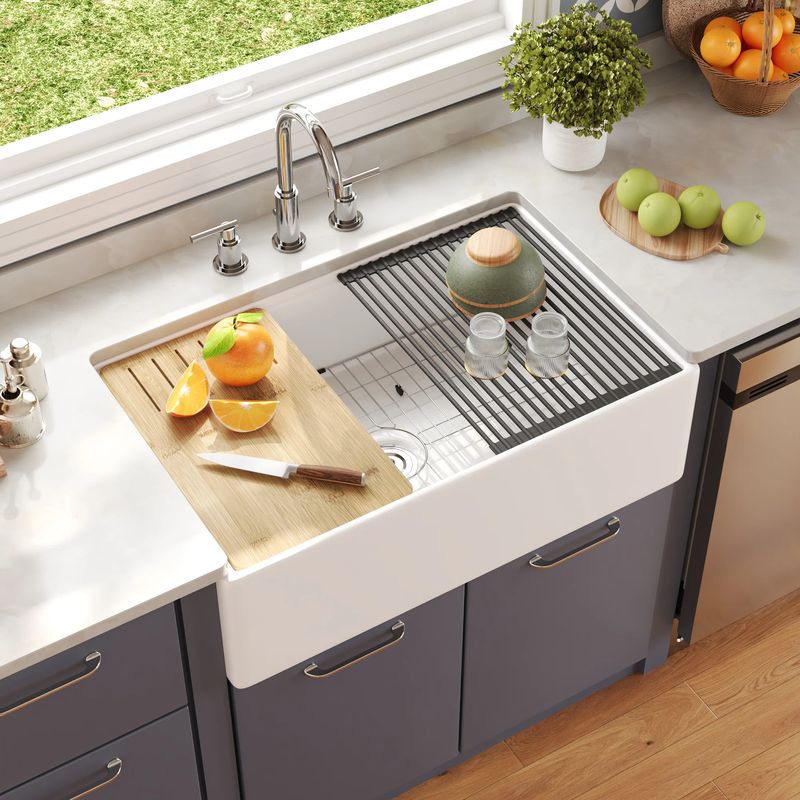
Installation Labor
Installation is where things get interesting. Single sinks are simpler, with labor costs around $100 to $200.
Double sinks, being bigger and heavier, need more plumbing tweaks, pushing labor to $150 to $300. That's an extra $50 to $100 for the added complexity.
Total Cost Range
Adding it all up, a single sink setup ranges from $200 to $500, while a double sink lands between $350 to $800. So, double sinks cost $150 to $300 more overall. It's a trade-off: for budget-conscious renovators, single sinks offer significant savings, but double sinks offer more space.
Space Requirements for Double vs. Single Bowl Kitchen Sinks
Choosing a double vs single bowl kitchen sink isn't just about preference—it's about how it fits your space.
Kitchen Size and Sink Fit
Your kitchen's square footage is a big factor in this decision. Here's how it shakes out:
Small Kitchens (<100 sq. ft.): Every inch matters in a cozy space. A single bowl sink saves counter room, making prep and cleanup a breeze. According to NKBA 2024, 70% of small kitchens prioritize single sinks.
Medium Kitchens (100–200 sq. ft.): With more room to play, you've got options. Double bowl sinks edge out here for their multitasking perks—like washing dishes on one side and soaking laundry on the other. About 60% of homeowners in this range pick doubles, while 40% keep it simple with singles.
Large Kitchens (>200 sq. ft.): Space isn't an issue, so double sinks shine. They handle big meals and entertaining with ease, and 80% of large kitchen owners go this route for functionality and style.
Kitchen Size |
Square Footage |
Most Chosen Sink Type |
Adoption Rate |
|---|---|---|---|
Small |
<100 sq. ft. |
Single |
70% |
Medium |
100–200 sq. ft. |
Double |
60% |
Large |
>200 sq. ft. |
Double |
80% |
Usage Patterns: Double or Single Kitchen Sink, Which is More Practical?
Choosing between a double or single kitchen sink comes down to how you use your kitchen. Let's dive into three key factors: washing large pots, handling simultaneous tasks, and water efficiency.
Washing Large Pots
If you're someone who loves cooking big meals—think oversized stockpots or roasting pans—a single sink might be your go-to. Its wide, uninterrupted basin gives you plenty of room to scrub without wrestling a divider.
Double sinks, while handy, can feel restrictive with their split design, making it trickier to maneuver those bulky items. For big cookware fans, single sinks often win for sheer space.
Simultaneous Tasks
Double sinks take the lead when it comes to multitasking. Picture this: you're washing dishes in one basin while rinsing veggies or soaking laundry in the other. It's a game-changer for busy kitchens, especially if you don't have a dishwasher.
This setup keeps tasks separate and speeds up your workflow. Single sinks, though roomy, can't match that level of organization, which might leave you juggling tasks in one space.
Water Efficiency
When it comes to saving water, it's a close call. Single sinks might be used less since you're filling one basin instead of two. However, double sinks offer a smart twist—you can fill one side for washing and use the other for rinsing, cutting down on running the tap endlessly.
While single sinks use more water per fill, doubles enable staggered tasks, reducing overall usage.
Installation Complexity: Double Sink Versus Single Sink in Kitchen
Wondering how easy it is to install a double sink versus a single sink? Installation complexity comes down to cabinet modifications, plumbing adjustments, and costs. Here's what you need to know in simple terms.
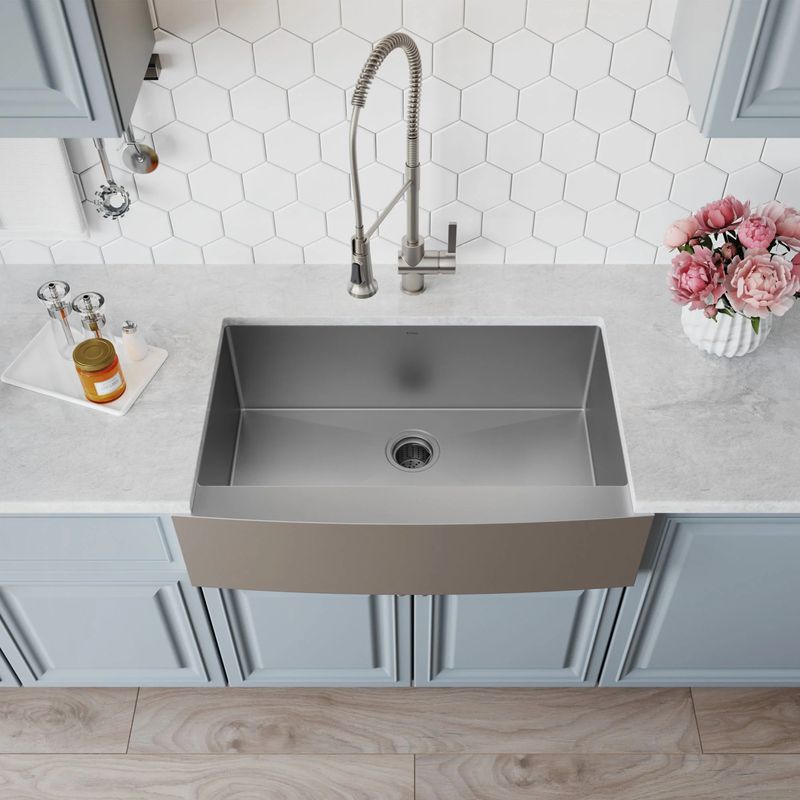
Cabinet Modification
Double sinks are wider, often requiring a cabinet base of 36 inches or more. If your kitchen has a smaller cabinet, you might need to modify or replace it, adding effort and expense.
Single sinks, however, typically fit standard 30-inch cabinets with no fuss, making them easier to drop into place.
Plumbing Adjustments
Plumbing can make or break the job. Double sinks have two drains, which means extra pipes and connections. Plumbers recommend professional installation for double sinks due to drain alignment risks. Single sinks keep it simple with one drain, usually aligning with existing plumbing for a smoother install.
Installation Costs
Costs reflect the effort. Double sinks often run $50 to $100 more to install due to the extra plumbing and potential cabinet tweaks. Single sinks, with their straightforward setup, tend to be lighter on your wallet, making them a budget-friendly choice.
In short, single sinks win for quick, affordable installs, while double sinks offer more function if you're okay with extra work.
Maintenance and Longevity: Double Bowl Kitchen Sink vs Single
When we're picking out a kitchen sink, we often think about how it looks or how it works, but maintenance and longevity matter just as much. How easy is it to keep clean? Let's dive in!
Maintenance: Keeping Things Sparkling
Keeping our sink clean and working well is a big part of kitchen life. With a single bowl sink, we love how easy it is to maintain. It's just one big basin with no extra corners or dividers, so wiping it down after a meal is a breeze.
We can run a sponge across the whole surface without missing spots, and there's only one drain to check for clogs. For a quick cleanup, we recommend using a soft cloth and a sink grid to protect the bottom from scratches—simple and fast!
On the flip side, a double bowl sink has two basins and that divider in the middle, which means a bit more elbow grease. We've got to clean each side separately and pay extra attention to the area around the divider where residue can hide.
It might take a few more minutes, but we can make it easier by using a small brush to get into those tight spots. Plus, having two drains means we should keep an eye on both to avoid blockages—nothing a good strainer can't handle, though!
Longevity: Will It Stand the Test of Time?
We all want a sink that lasts, and thankfully, both types can go the distance if we treat them right. A single bowl sink keeps things simple with no divider to worry about.
Made from tough stuff like stainless steel or cast iron, it's built to handle years of use without fuss. Stainless steel single sinks last 15–20 years.
For a double bowl sink, longevity is just as solid, but we need to watch that divider. If it's not sturdy, it could crack under pressure—like when we set a big stockpot on it. Most modern designs reinforce this spot, so it's not a huge concern. Composite granite doubles endure 25+ years.
The two drains might sound like double trouble, but they usually connect to one pipe underneath, so plumbing issues aren't much different from a single sink. Regular care, like avoiding harsh cleaners, keeps both types shining for decades.
So, What's the Verdict?
In our view, a single bowl sink wins slightly on maintenance—it's quicker to clean with less hassle. Longevity-wise, both are neck-and-neck if we pick quality materials and care for them well.
Resale Value: Does a Double Kitchen Sink or Single Boost Home Value?
When we're sprucing up our kitchen, we often ask ourselves: will our sink choice—like going for a double or single kitchen sink—make a difference when it's time to sell our home? It's a great question! Resale value is all about how much a feature can boost our home's price or make it more tempting to buyers.
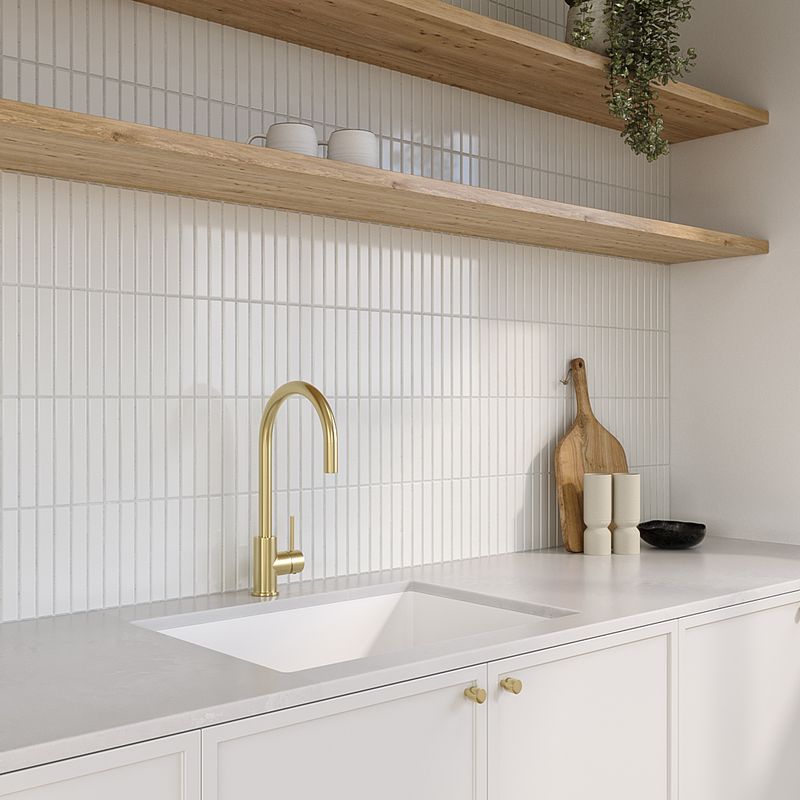
Buyer Appeal: What Do Homebuyers Love?
A double kitchen sink is a hit with folks who love practicality—think busy families or cooking enthusiasts. With two basins, we can wash dishes in one and rinse in the other, keeping everything tidy. It's a dream for multitaskers!
Meanwhile, a single kitchen sink shines in modern homes. Its big, open basin gives off a clean, stylish vibe that appeals to buyers who adore sleek designs or have smaller kitchens.
Price Premium: Does It Up Our Home's Worth?
So, can a sink really add dollars to our sale price? Truth is, sinks alone won't skyrocket our home's value, but they're part of the kitchen package.
A sharp-looking double sink might make our space feel more functional, while a trendy single sink could add a touch of class. Buyers might not pay extra just for the sink, but if it ties into a killer kitchen reno—think new counters and cabinets—we could see a nice bump in value.
Days on Market: Faster Sale with the Right Sink?
Will our sink choice speed up a sale? It's not the main driver—location and price take the crown there—but it can help. A well-designed kitchen with a sink that flows with the space might grab buyers' attention faster.
In a seller's market, where demand for homes is high and inventory is low, a double sink vanity can be a selling point that sets your home apart from others. Potential buyers may be more willing to pay a premium for a home with a double sink vanity if there are few other homes on the market with this feature.
Our Verdict: It's All About the Fit
So, double sink vs single sink in kitchen for resale? It depends! If we're targeting families or cooks, a double sink might give us an edge. For a chic, modern crowd, a single sink could shine. Either way, we should choose what complements our kitchen and appeals to our local buyers.
Design Trends in 2025: What Are Homeowners Choosing?
When it comes to kitchen design in 2025, we're seeing homeowners pick sinks that blend style, function, and a bit of flair. Here's what's trending this year!
Workstation Sinks: Multitasking Magic
Workstation sinks are stealing the show! These clever designs come with built-in extras like cutting boards, colanders, and drying racks that slide over the sink.
We love how they let us prep, rinse, and clean up all in one spot—perfect for small kitchens or busy nights when every inch of counter space counts.
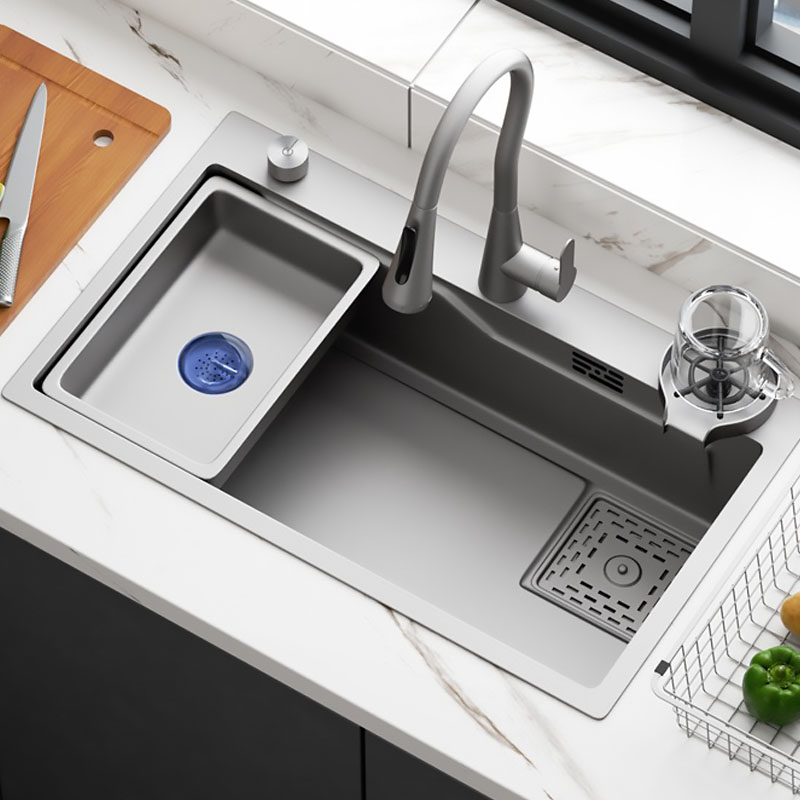 Ads
Ads
Undermount Workstation Kitchen Sink
The undermount workstation sink manufacturer H03 is designed for ultimate versatility and efficiency. This workstation sink undermount allows you to seamlessly switch between cutting meat and washing vegetables without cross-contamination.
Eco-Friendly Sinks: Sustainable and Smart
Going green is big, and eco-friendly sinks are a hit. Made from recycled materials like stainless steel or bamboo, these sinks help us reduce waste. Some even feature water-saving designs that keep our usage low without skimping on performance. It's a great way to make our kitchens planet-friendly and stylish.
Style Stars: Undermount and Farmhouse Sinks
For a sleek vibe, undermount sinks are a go-to. They sit under the counter for a seamless look and easy cleanup. Meanwhile, farmhouse sinks keep their charm with deep basins and modern materials like composite granite, available in tons of colors to match our decor. 2025 also sees rise in zero-edge sinks for ADA compliance.
Bold Colors and Smart Tech
We're ditching plain steel for bold-colored sinks in navy, green, or pastels—adding a fun focal point. And smart features like touchless faucets or built-in filtration? They're making our kitchens high-tech and hassle-free.
FAQs
Do you have questions about double and single kitchen sinks? We've got answers! Here are some of the most common queries about these kitchen staples.
Can two sinks share the same drain?
Yes! Most double kitchen sinks are designed with two basins that connect to a single drain system. This setup keeps plumbing straightforward and efficient under the counter.
Does a double sink need two water lines?
No! A double sink typically uses the same water lines as a single sink. The faucet, usually a single unit, delivers water to both basins, so extra lines aren't required.
Can you turn a single sink into a double sink?
Definitely! For DIY double-sink conversions, ensure cabinet depth exceeds 24 inches to avoid pipe conflicts.
Are double sinks outdated in a kitchen?
Not at all! While single sinks are popular in modern designs, double sinks remain a practical favorite. They're great for multitasking—ideal for busy cooks or big families.
Do double sinks use more water in the bathroom?
While a double sink in a bathroom might seem to potentially use more water, it's not necessarily a given, as water usage depends on individual habits and the type of faucets used.
Conclusion: Single or Double Sink, Which Fits Your Kitchen?
Is a single or double kitchen sink better? It depends on balancing spatial constraints, workflow needs, and budget.
Ready to upgrade? Explore Jabra Sanitary's top-rated sinks today and transform your kitchen workflow. Our products are crafted from premium materials in various finishes to perfectly match any kitchen style and budget!









